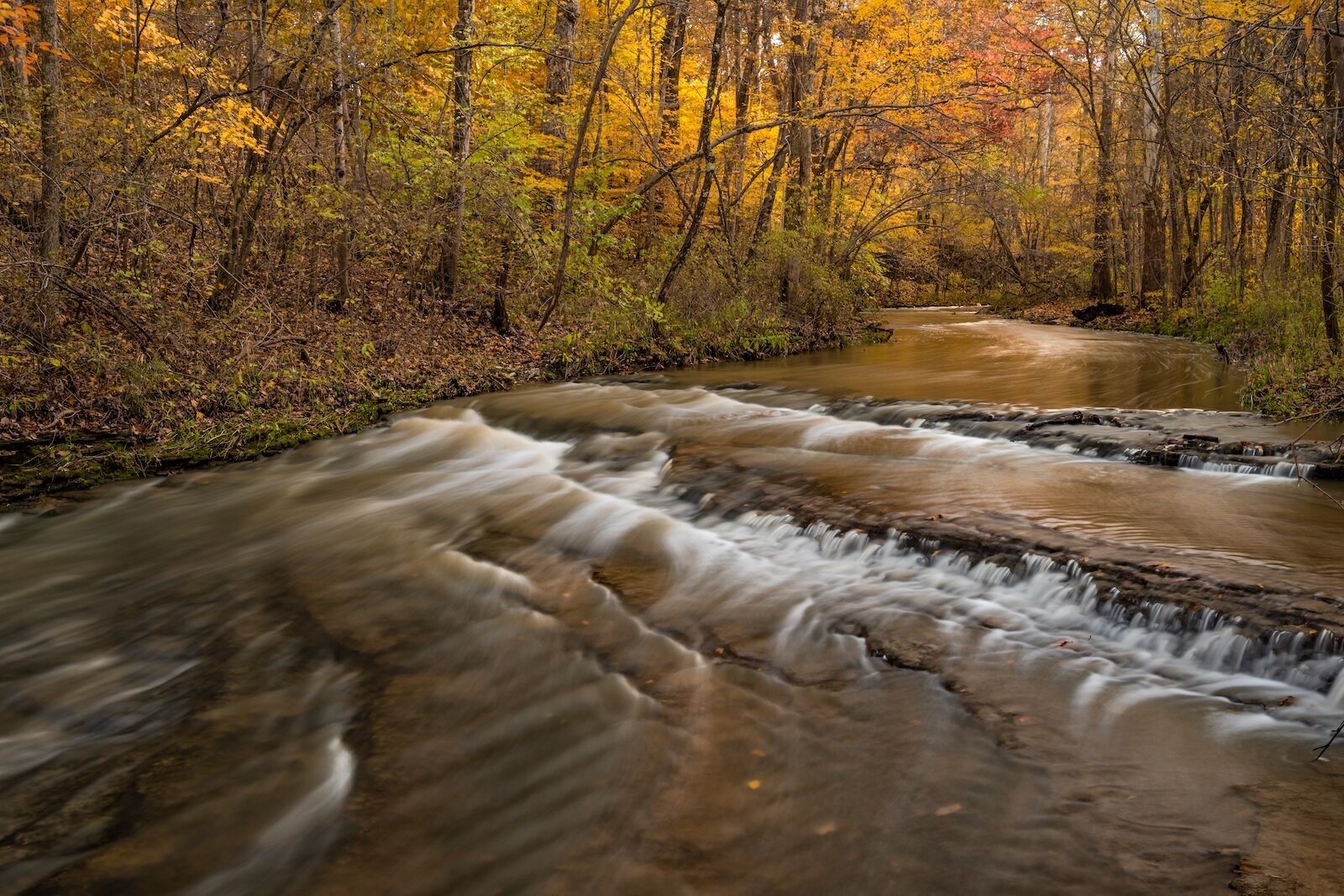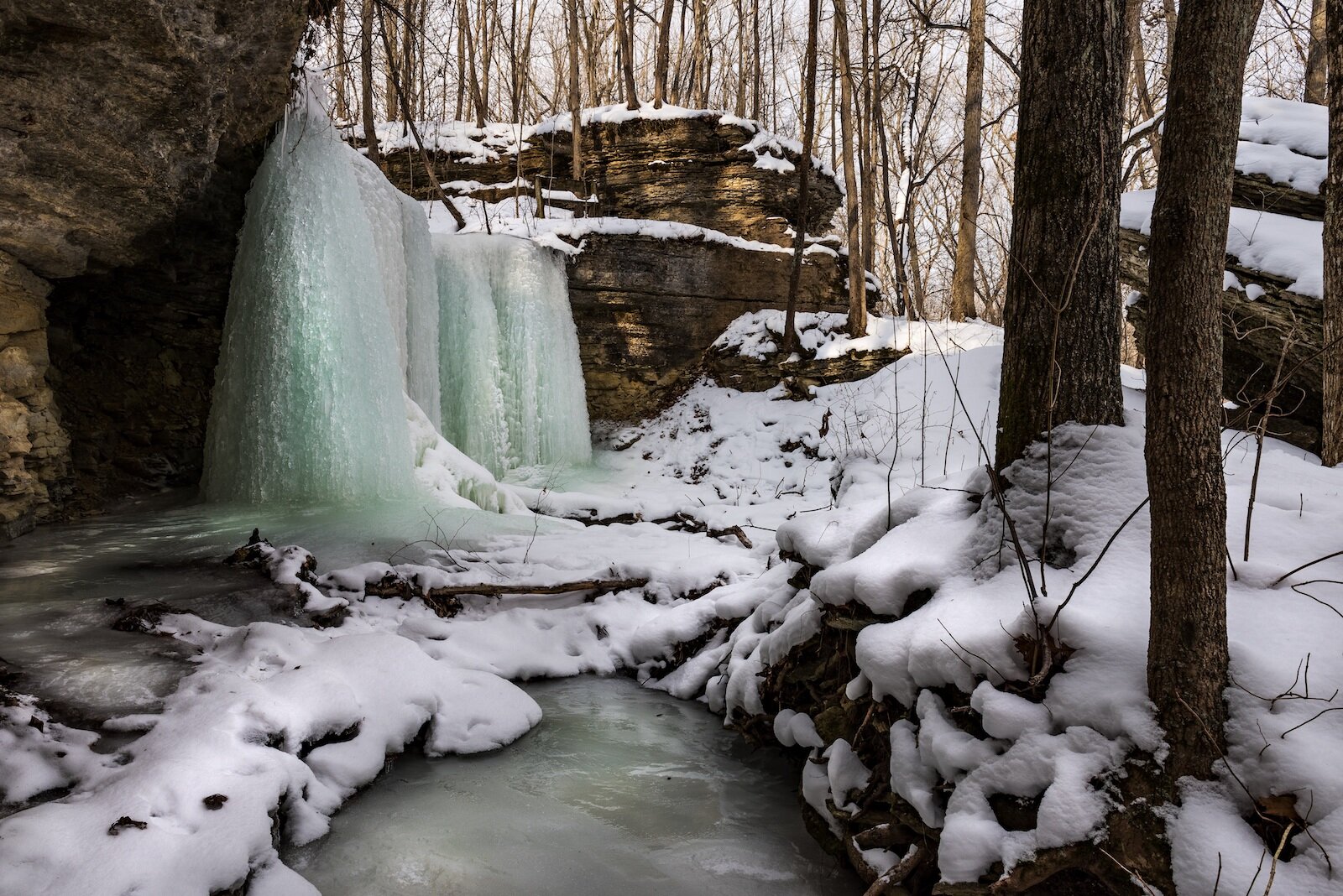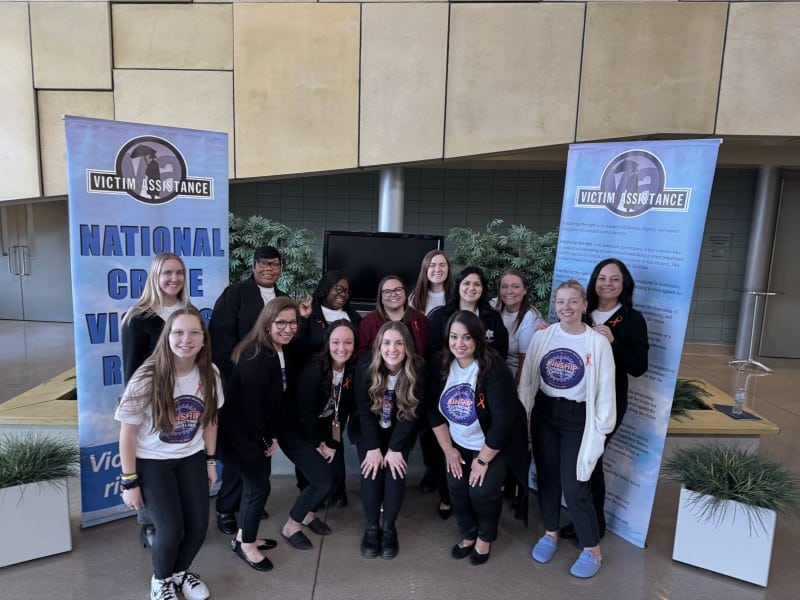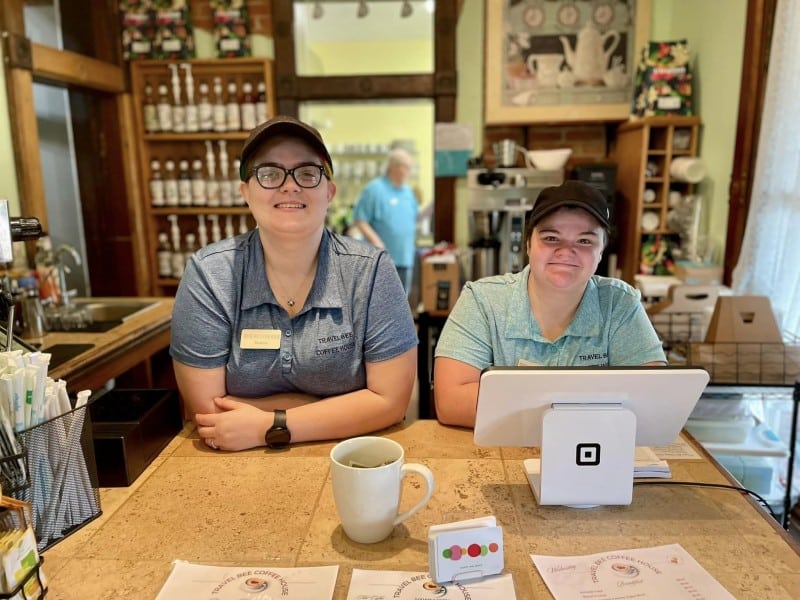‘I didn’t know Indiana could look like this’: 4 ACRES Land Trust nature reserves to hike and explore
“When this part of the world was a shallow sea, it looked a lot like a Caribbean reef. When we hold events down there, we find sea sponge, coral reef and any species you’d expect to see in a coral reef, you can find fossilized down there.”
Ravines, bluffs, waterfalls, wetlands, and wildlife. These are just a few of the natural wonders you’ll find at Northeast Indiana’s many nature reserves.
ACRES Land Trust is a nonprofit, preserving and protecting some of the area’s most picturesque landscapes. They protect more than 100 properties in the region. While some closed to the public, strictly set aside as nature sanctuaries for scientific study, ACRES offers trails at about 30 locations for free public use. These reserves are open to visitors year round.
Jason Kissel has been the executive director of ACRES Land Trust for 16 years. Kissel says the member-supported nonprofit organization is the oldest land trust in Indiana, incorporated in 1960.
“Preserving land is our primary business,” Kissel says. “We own 7,300 acres of land throughout Northeast Indiana, and 95 percent of the properties are nature reserves, where we manage the land for the natural resources.
ACRES owns six properties in Wabash County, about an hour Southwest of Fort Wayne, and four of them are open to the public, which Kissel says is unique.
“We usually have fewer properties that are open to the public, but in Wabash County, they’re all esthetically pleasing, interesting and cool properties to visit. We’ve had a lot of demand for the properties here.”

Here are four places to explore on your next outdoor adventure in Northeast Indiana:
Asherwood
7496 W. SR 124, Wabash, IN 46992
“Located on the very Western boundary of Wabash County, almost to Miami County, Asherwood – ACRES Land Trust is 160 acres of wooded property with a pretty extensive trail system,” Kissel says.
Visitors can traverse 2.4 miles of trails, forests, ravines, wetlands, ponds, and Asher Creek.
Marion Community Schools previously ran a nature-based curriculum in the educational center, and a forest preschool now utilizes the space. Visitors might also stumble upon some wild geranium in the spring, or spot some old-fashioned metal buckets on sugar maple trees, collecting sap in the winter.
Hanging Rock National Natural Landmark
4552 E. Hanging Rock Rd., Lagro, IN 46941
Located on the Wabash River, Hanging Rock National Natural Landmark is considered a small area, with 0.2 miles of trail, but it also holds a big piece of history.
“It’s a small property, only five acres, and we acquired it simply because of Hanging Rock itself, which is an exposed coral reef,” Kissel says. “The rock sits about 60 feet above all of the surrounding areas. As far back as oral tradition has gone, it’s been a lookout place either for the Native Americans and later for fur traders. It’s one of those iconic natural features that has always been on maps. Pretty much every geological textbook in the world mentions it because it’s one of the few places in the world where you can see this particular timeline of exposed reef.”
The fossilized Silurian coral reef is a roadside attraction, and a significant geological site, dating back about 420 million years.
“Especially in Wabash County, there are a lot of exposed reef in that area,” Kissel says. “When this part of the world was a shallow sea, it looked a lot like a Caribbean reef. When we hold events down there, we find sea sponge, coral reef and any species you’d expect to see in a coral reef, you can find fossilized down there.”

Hathaway Preserve at Ross Run
1866 E. Baumbauer Rd., Wabash, IN 46992
Located near Hanging Rock, Hathaway Preserve at Ross Run has multiple waterfalls, two miles of trails, and 72 acres of land.
“It has a steep cliff area that’s really spectacular, with a 60-70 foot cliff,” Kissel says. “The geology is the showstopper there. It’s one of the most popular preserves just because of the overlooks. You get to see down into those areas, and see the waterfalls.”
In the winter, the waterfalls freeze over, revealing a breathtaking image, perfect for cold weather excursions.
“Sometimes, you’ll get 30-foot icicles hanging off those,” Kissel says. “Twice a year, we have events that go in the creek (normally off-limits) where you can walk behind all these ice caves in the wintertime. It’s a beautiful property.”
Mature oak trees line the woods, with majestic trunks over four feet in diameter. You might even spot some wildlife, including red-bellied woodpeckers and Henslow’s sparrows.
Kokiwanee
5825 E. 50 S, Lagro, IN 46941
Featuring 139.5 acres of land, and 3.1 miles of trails, Kokiwanee incorporates many diverse species of trees, wildflowers, birds, ducks, great blue herons, bald eagles, and otters.
“Everybody assumes it’s some kind of Native American name, but it actually used to be a Girl Scouts camp, and the Kokomo Kiwanis were the sponsors,” Kissel says. “They put Kokomo and Kiwanis together, and came up with Kokiwanee.”
Originally, the land was going to be sold to developers, but former Girl Scouts recruited ACRES to help with fundraising and were able to protect the property.
“Our goal is to keep up with the pace of development,” Kissel says. “We’re not anti-development at all. But if a county is getting really highly-developed, let’s make sure we’re saving some of the places that are drawing people toward it.”
The land has a cliff, along the Salamonie and Wabash River with about 10 different waterfalls, making it a popular destination in the spring and summer.
“A lot of people use this property for long hikes and make them even longer by going into the neighboring Salamonie Forest,” Kissel says.
***
No matter which property you choose (or choose first on your bucket list), ACRES Land aims to provide a unique natural setting for your dog walking, hikes, nature photography, and birdwatching afternoon.
“We encourage people to go to these properties,” Kissel says. “When they go there, they are like, ‘Well, this is spectacular. I didn’t know Indiana could look like this.’ Land trusts really help people preserve their sense of place. ACRES makes sure these places people love are always going to be there and serve a public benefit, rather than an individual’s benefit.”
Instead of one family enjoying natural landmarks, ACRES enables an unlimited amount of visitors to enjoy these spaces. In fact, Kissel noticed a huge increase in visitors during the height of the pandemic, as families looked for safe outdoor activities.

“I would say we had four-to-five times as many people in the preserves, and it hasn’t subsided much,” he says. “It hasn’t gone back to pre-pandemic levels. There’s still a very increased use of the preserves.”
Recent upgrades to the areas include larger parking lots, and simplified, well-defined trail systems.
“The pandemic really pushed a lot of people outside, and they either discovered or re-discovered that they enjoy nature, and appreciate it,” he says. “It’s been really nice to see there’s been a new appreciation for nature for its own sake and for the human benefits. People just feel better when they’re in nature.”
About 60-70 percent of ACRES money comes from visitor donations. Without state or federal assistance, many counties, including Wabash County, don’t have a parks department.
“ACRES is kind of filling that role through no taxpayer dollars,” Kissel says. “It’s continuing to acquire land, making some of it available to the property, and we’re not done. There’s still several properties in the county we hope to acquire within the next couple years.”
Kissel says preserving this much land isn’t something anyone can do on their own, and many dedicated volunteers contribute to ACRES legacy. Kirk Swaidner has been an ACRES volunteer for around 15 years and has been a property steward for five seasons at Hathaway Preserve at Ross Run.
Swaidner attributes his love for nature to growing up and playing along the Wabash River.
“That’s all there was to do for my generation in the ‘60s was to be outside,” he says.
The mountain biker and backpacker was introduced to ACRES, and was impressed with their mission. He says it provided an ideal situation for him, as he was nearing retirement. His typical steward duties include mowing the trails, manicuring the land, cutting back brush and bramble, and removing fallen trees and litter.
“Watching the preserve change month-by-month and seeing the rhythm of nature,” is Swaidner’s favorite part about his volunteerism. Witnessing the levels of water change and the foliage of the trees is inspiring and rewarding, he says.
“I mowed yesterday, and just stopped a dozen times and just stared at the landscape I could see,” he says. “Not just in the preserve, but across the countryside.”
Swaidner encourages people to get involved and help, whether it’s with their time or their dollars, to preserve these great spaces for future generations. He hopes to see ACRES membership growth and increased education and outreach in the future.
The hobby geologist says he tries to do as much “marketing” as he can for ACRES, hoping to connect with other people and inspire them to do their part in preserving the region’s natural beauty.
“People getting out into these preserves and natural areas is critical,” Swaidner says. “We spend way too much time inside. We’ve only been inside buildings for maybe 150 years, just three generations. You go back four generations, and everybody was outdoors.”
Wabash is the focus of a Partner City series in Input Fort Wayne underwritten by Visit Wabash County and Honeywell Arts & Entertainment. This series will capture the story of talent, creativity, investment, innovation, and emerging assets shaping the future of Wabash County, about an hour Southwest of Fort Wayne.










